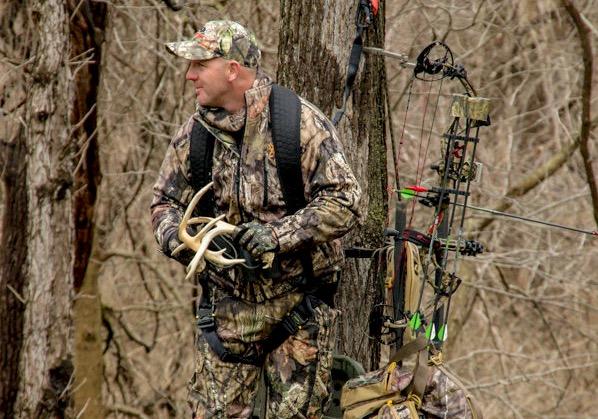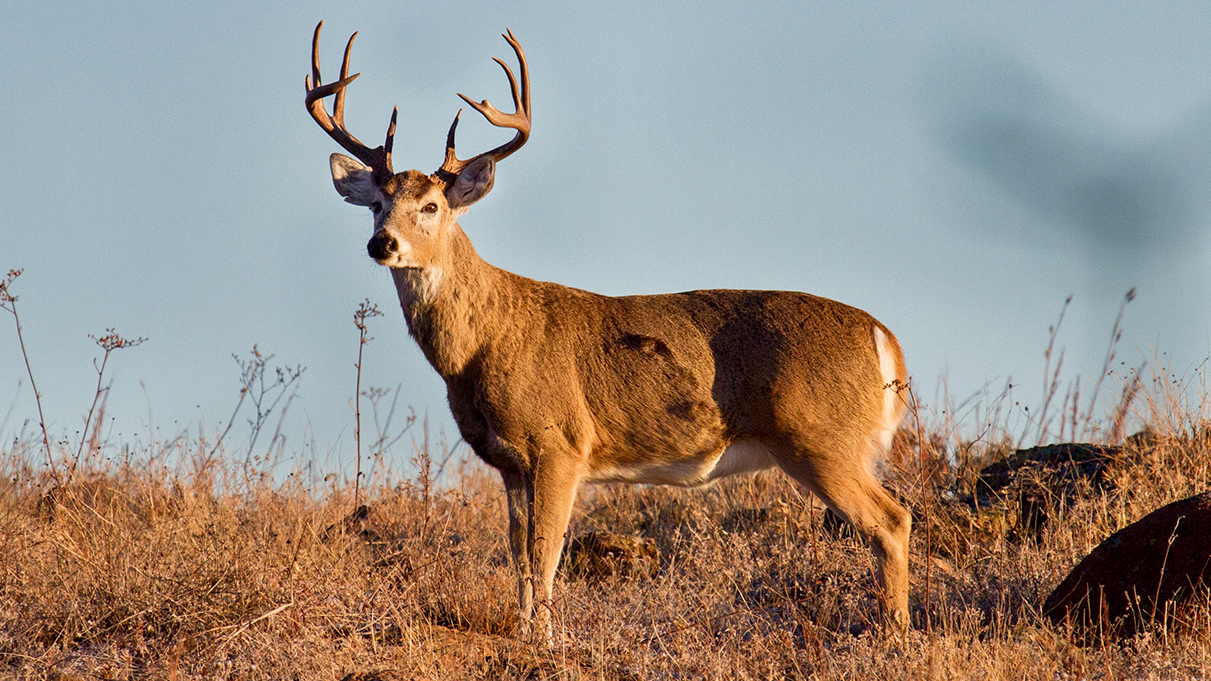THE ULTIMATE WHITETAIL CHALLENGE
7 crucial steps for successfully hunting the biggest trophy bucks
Advertisement

#3 Stage a Fight
If you have a trail cam photo of your local dominant buck, select sheds for rattling that are slightly smaller than his rack. This will bring out the deadly combination of confidence and rage in the testosterone-charged bruiser. If you don’t have a photo to go on, then a safe bet would be average-sized sheds from a mature eight- or 10-pointer. Remember, you’re aiming for Mr. Big, so there’s no point using a small rack to raise his ire.
I use a three-step technique when rattling, starting with gently tickling the tines together for 20 seconds to see whether the big boss is within close proximity. I then wait 10 minutes, and if he doesn’t appear, I rattle again. This time, though, I aggressively smash the beams and tines together. I also grind the gnarly antler bases against each other, adding more authenticity to the simulated fighting sounds. Do all this for 20 seconds, then wait 30 minutes. If your monster buck still doesn’t show up, repeat the aggressive rattling and grinding for another 20 seconds, then wait an hour before repeating the sequence.
Advertisement
When rattling from the ground, simultaneously kick leaves and snap branches to add realism. While you can only mimic the sounds of an antler battle from a treestand, meanwhile, the elevated position at least offers a greater vantage point to spot an incoming buck. And, ultimately, it’s the sound of the smashing headgear that draws in dominant bucks, especially if they’re farther away.
The best times of the deer season to attempt rattling are during the week leading up to the rut, the week following the rut (late October through to the first week of November) and again later in November. The tactic is most effective in the early morning and late evening, and on cooler days.

